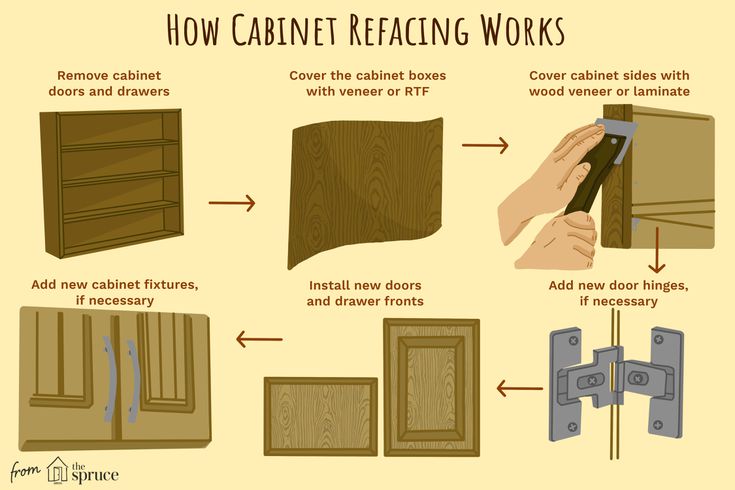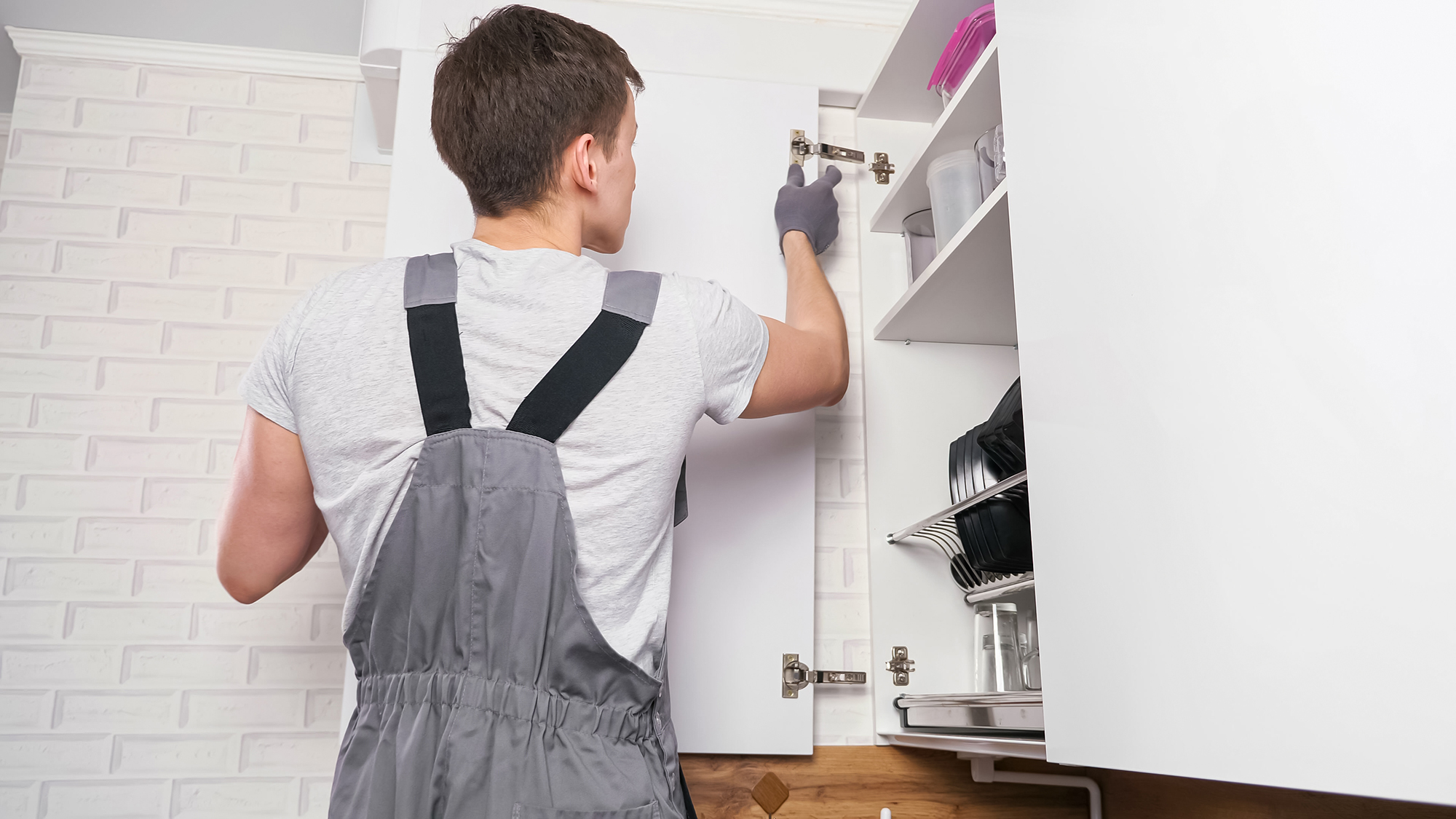-
Now is when many homeowners are Spring cleaning and realize their kitchen cabinets aren’t working for them anymore. However, a cabinet makeover may be difficult for those who are on a tight budget and/or schedule. But did you know that you don’t have to fully replace your kitchen cabinets? A recent study from Houzz shows that 1/3 of respondents only partially replace their kitchen cabinets. Partial cabinet replacement is a cost- and time-saving option that may be ideal for many homeowners.
The Savings of Partial Cabinet Replacement
There are many factors that go into the cost of a full or partial kitchen cabinet replacement. Stock and semi-custom cabinets and cabinet components will run you less than a custom solution. When you add the variation of costs based on location, the range can vary even more…the cost of a full cabinet replacement can go as high as 10k or even approach 20k, if you’re looking for top-of-the-line materials and unique design. However, several sources, such as homeguide.com and Bob Vila, have mentioned the national average to be in the ballpark of $5,000-$6,000.
A full cabinet replacement will cost more than a partial one, unless you downgrade to something of lower quality (which comes with concerns of its own in the long run). By working with your existing cabinets, you can save anywhere from 30% to 50% when compared to a full replacement. If lower-cost options are what you’re looking for, then going the partial cabinet replacement route may be the way to go.
As for saving time, a full cabinet replacement can take up to 2 months and render your kitchen unusable for an extended period of time, but a partial cabinet replacement can be done in as little as 1-2 weeks!
But First, How Well Do Your Existing Cabinets Hold Up?
Does a partial cabinet replacement sound enticing to you? Before we go any further, it is important to assess the condition of your existing cabinets and components. Is there water or termite damage? This is especially true for those living in humid climates prone to these problems. Sometimes the signs aren’t the easiest to spot, especially if in the early stages of damage. For this reason, it’s a good idea to have a professional come in to have a look. The worst thing is to get a partial replacement and then have to get a full replacement shortly after!
After you have determined that your existing cabinets are suitable for partial replacement, there are two options to consider. We mentioned these options in our previous article , but let’s dig a little deeper and explore the differences and capabilities of each.
Change the Color with Cabinet Refinishing
Let’s take a look at our first option, which is cabinet refinishing. You keep all the existing framework, including the cabinet doors, in this process. The only thing you are changing is the color or finish of the cabinets, so you are only “replacing” the paint or stain. This may be an option to consider if you want to go from white to black cabinets or a light wood to a dark wood stain. It is important to first determine the construction material of the cabinets (i.e. type of wood) and if the cabinet has a sealed finish or not. If a sealant has been applied, it would first need to be chemically stripped and/or sanded away before it will accept any new paint or stain.
Another thing to note, if you want the wood grain to show through, going from a darker to lighter stain is usually more labor-intensive and costly than vice versa, because the dark stain would need to first be removed before applying the lighter stain. However, removal of darker paint and stains is usually not required prior to applying a lighter paint because several coats of light paint will be opaque enough to cover up the dark color. Both the interior and exterior of the cabinets can be refinished to the color(s) of your choice.
Cabinet Refacing/Resurfacing for a More Dramatic Change
The second option is to reface (or resurface) your cabinets. Because you are changing out the doors and drawer fronts, this option allows for a bigger change to the overall look of the cabinets. For example, you can go from heavily-mitered traditional cabinets to modern flat panel cabinets with this method, which will change the entire look and feel of your kitchen.
Cabinet refacing can also hide surface blemishes (such as scratches, nicks, and stains) because a paintable laminate or veneer is placed over the existing cabinet boxes prior to painting. Often times, the new veneer does the job and new paint is not required. Either way, a professional will ensure that the finished product appears original to the cabinets.
After the cabinet boxes are refaced and new doors and drawer fronts are put in, you can select new hardware to complete the look. Choose from small knobs to long handles that span almost the length or width of the door. Changing out the door also means you can freely change the placement and configuration of the handles.

The Spruce Hardware: A Small Change that Could Make a Huge Difference
If you are on a small budget, at minimum you could change out the cabinet hardware. The difference it makes can be striking. Gold and matte black hardware are very popular right now and can instantly refresh your kitchen with a more high-end look. However, keep in mind, since you are not changing out the doors and drawer fronts, you’re likely working with the existing configuration. Filling in screw holes and adding new ones may be a job best left for professionals for a seamless look.
Revive Your Cabinets
The Cabinet Doctors are experts in cabinet renovations, with a focus on cabinet refacing/resurfacing. We offer custom solutions to fit all your kitchen and bathroom renovation needs. We are happy to work with your budget and present you with a result you’ll be pleased with. Get a free estimate today!
Showroom Hours:
M-F 10am-4pm
After hours and weekends by appointment only
Creating Beautiful Kitchens
and Baths for Over 30 Years.For a complete kitchen or bath remodel, new cabinets, refacing in wood or paint,
we have the products and expertise to serve you.
Showroom Hours:
M-F 10am-4pm
After hours and weekends by appointment only(916) 632-8299
2200 Sierra Meadows Drive, Ste. A, Rocklin, CA 95677
info@thecabinetdoctors.com
License # 779523- Roseville
- Rocklin
- Fair Oaks
- Sacramento
- Lake Tahoe
- Lincoln
- Folsom
This site is protected by reCAPTCHA and the Google Privacy Policy and Terms of Service apply.
© Cabinet Doctors . All Rights Reserved. Design By Elevate Public Relations.

